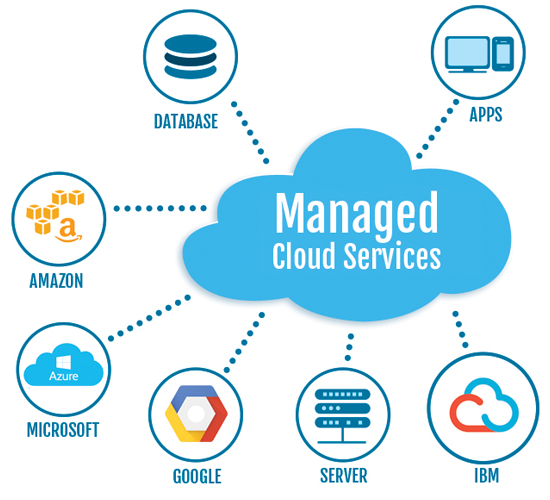Mastering LinkDaddy Cloud Services: The Ultimate Guide to Cloud Services Press Release Strategies
Mastering LinkDaddy Cloud Services: The Ultimate Guide to Cloud Services Press Release Strategies
Blog Article
Simplify Your Infrastructure With Cloud Provider
As organizations navigate the ever-evolving landscape of technology and information management, the role of cloud services in streamlining framework has actually become increasingly popular. Exactly how can services properly browse this change and truly unlock the capacity of cloud services for streamlining their facilities?
Benefits of Cloud Solutions
Cloud services use a streamlined technique to handling IT framework, giving businesses with versatility, scalability, and cost-efficiency. Among the vital advantages of cloud solutions is the scalability they offer. Companies can conveniently scale their resources up or down based upon demand, guaranteeing they just pay for what they use. This flexibility is particularly beneficial for companies with varying needs or those experiencing growth.
Additionally, cloud services get rid of the demand for organizations to buy expensive software and hardware. This cost-efficiency is a substantial advantage, specifically for little to medium-sized enterprises aiming to reduce in advance prices. By utilizing cloud services, companies can access high-grade IT sources without the significant cost related to traditional framework setups.
In addition, cloud services give businesses with the versatility to access their information and applications from anywhere with a net connection. This level of ease of access boosts cooperation among groups, makes it possible for remote work, and raises general efficiency. The flexibility supplied by cloud services empowers organizations to adapt quickly to transforming market conditions and consumer demands.
Price Cost Savings and Scalability
Along with the operational advantages highlighted previously, the combination of cloud services into a business's facilities brings forth substantial cost savings and improved scalability. Cloud services use a pay-as-you-go version, allowing companies to scale sources up or down based on present requirements, thus preventing the expenses connected with maintaining excess capacity. This flexibility enables firms to adapt swiftly to varying demands without incurring unneeded costs.
Additionally, cloud solutions eliminate the need for ahead of time financial investments in equipment and software application, minimizing capital investment. Operating expenditures are also decreased as firms no more need to manage and maintain physical web servers, leading to lower energy intake and IT staffing costs. In addition, cloud services offer automated updates and upkeep, guaranteeing that the infrastructure remains protected and up-to-date without calling for hands-on interventions.
Enhanced Safety And Security Measures
When integrating cloud services into a company's facilities to ensure and secure sensitive data conformity with sector guidelines,Implementing rigorous protection actions is extremely important. Cloud provider use enhanced safety features such as data encryption, firewall program defense, and multi-factor authentication to alleviate cybersecurity threats. Encryption assists shield information both at remainder and in transit, guaranteeing that just accredited users can access sensitive information. Firewalls act as an obstacle between exterior hazards and interior networks, tracking and controlling inbound and outbound network traffic. Multi-factor authentication includes an additional layer of security by requiring users to supply numerous types of verification prior to accessing the cloud services.
Furthermore, regular security audits and compliance evaluations assist guarantee and determine susceptabilities adherence to industry criteria. Business can likewise profit helpful site from features like computerized safety updates and real-time threat monitoring provided by cloud company. By prioritizing safety and security actions and staying aggressive in addressing potential risks, companies can confidently leverage cloud services while safeguarding their beneficial information from unapproved accessibility or violations.
Transitioning to Cloud Framework
To effectively integrate cloud solutions right into a business's framework, a structured approach that deals with the change towards cloud-based solutions is crucial. Transitioning to cloud facilities entails careful planning and implementation to make sure a smooth movement procedure - universal cloud Service.
As soon as the analysis is total, a movement strategy must be created. This approach should describe the timeline, resources, and duties for moving each element to the cloud. It is vital to connect this strategy clearly to all stakeholders to guarantee alignment and minimize disturbances during the transition.
Throughout the movement procedure, monitoring and screening are vital to determine and resolve any kind of problems without delay. Normal checkpoints ought to be developed to track progression and make needed adjustments. Additionally, training for staff members on utilizing cloud services ought to be offered to guarantee a successful change and make the most of the benefits of the brand-new framework.
Ideal Practices for Cloud Fostering
Successful adoption of cloud services depends upon the critical placement of service objectives with technological abilities and business readiness. To guarantee a smooth change to the cloud, companies need to begin by carrying out an extensive analysis of their current facilities and recognizing which workloads are best matched for cloud migration. It is discover this info here essential to entail crucial stakeholders from different departments in the decision-making procedure to obtain buy-in and address any kind of problems beforehand.
Another finest practice for cloud fostering is to focus on safety and security and conformity. Organizations needs to carefully evaluate the safety and security procedures offered by cloud service carriers and ensure that their information is protected according to industry standards and regulative demands. Carrying out durable data encryption, accessibility controls, and routine safety audits can aid minimize risks connected with cloud fostering.

Conclusion

As companies navigate the ever-evolving landscape of technology and data management, the role of cloud solutions in simplifying infrastructure has actually come to be progressively popular - linkdaddy cloud services. How can organizations effectively navigate this change and genuinely open the potential of cloud services for streamlining their framework?
Cloud solutions supply a structured method to click to investigate handling IT framework, offering services with scalability, versatility, and cost-efficiency. By making use of cloud solutions, services can access top quality IT sources without the large price tag linked with traditional framework configurations.
To make certain a smooth shift to the cloud, companies need to start by performing a detailed evaluation of their present framework and identifying which workloads are best suited for cloud movement.
Report this page